It doesn't matter how judgmental Alan and I are about touristy places, there is no doubt about Rome - we would have to agree wholeheartedly that it manages its tourism extremely well. We found exploring Rome on foot to be amazingly visitor-friendly, easy and convenient. Furthermore, its history is there just staring you in the face and right in the very heart of the city. We found our wanders around Rome relaxing and quite delightful. At nearly every corner there was a wonderful old basilica, or a stately piazza or a commanding building.
Relais 6 staff was very helpful, suggesting that we catch a taxi into the Piazza Navona then wander at our leisure to the many nearby attractions, basilicas, churches and historic sites. We also knew that the Piazza Navona cafes are well known for the fabulously decadent chocolate truffle ice cream creation known as "Tartufo". We are neither ice cream nor chocolate freaks, but the Tartufo did sound like something we should experience while we were in Rome.
PIAZZA NAVONA
THE CAFE AI TRE TARTUFI
The Tartufo di Pizzo ice cream was invented in 1952 when a relative of King Victor Emannuel II came to Pizzo for the celebration of an aristocratic marriage, and where many famous guests were invited for an elaborate dinner. Unfortunately the hosts did not have enough cups to serve the guests the ice cream dessert but the clever chef Don Pippo de Maria came up with a creative solution. He invented an ice cream that did not need a cup but instead could be served on a plate. He placed a small portion of hazelnut and a small amount of chocolate ice cream in the palm of his hand, poured over some melted chocolate and then wrapped everything up in special paper to mould it. Wrapped up like little presents, he put the ice cream parcels back in the freezer before serving it to his guests. Don Pippo's invention earned him immediate fame. After the wedding Don Pippo returned to his ice cream parlour which apparently exists to this day. A former waiter of Don Pippo named Giorgio di Lorgi took over Bar Dante in 1964. The cafe is located on the central piazza in Pizzo and serves the famous Tartufo ice cream according to the secret recipe of Don Pippo.
An easy ten minute taxi trip took us from the Relais 6 to the very heart of Rome - and the cobble stone Piazza Navona. Built on the site of the 1st century AD Stadium of Domitian which was built for the public city games and other competitions, then later used for the city's central market for almost 300 years, the Piazza Navona is now regarded as the central show piece of modern Rome, housing some of the finest examples of baroque architecture in Italy.
The square was simply bursting with life, housing fabulous baroque palazzi, strikingly ornate fountains and statues, and the magnificent Church of Sant'Agnese in Agone. Lining the piazza were an endless array of streetside cafes and restaurants - and even though it was only mid morning, all were brimming full of local patrons and even more tourists. Life looked happy and prosperous for the people frequenting the Piazza Navona.
There were plenty of cafes advertising Tartufo but in the end we settled for the attractive and well patronised Cafe Ai Tre Tartufi to sample some of the famous delicacy. I am sure that Don Pippo would have been mortified to see that there were several types of Tartufo on offer. We settled for the one doused in chocolate brandy liqueur and topped with cream and more cream. It was truly fantastic, if very rich and mega alcoholic. And it was a great opportunity to just sit and watch the world of the Piazza Navona and its people drift by. Needless to say, for non-chocolate eaters, we felt simply horrible after consuming it but we had to admit that it was absolutely delicious.
THE PIAZZA FOUNTAINS
The Piazza Navona is certainly a place for easy wandering. You simply cannot miss the many sculptural and architectural creations which are spaced only meters apart - many of which were created some 500 years ago.
In the centre of the square lies the Fontana dei Quattro Fiumi (Fountain of Four Rivers) created in 1651 by Gian Lorenzo Bernini. At the southern end is the Fontana del Moro with a basin and four tritons sculpted by Giacomo della Porta in 1575 to which, in 1673, the famous Bernini added a curious statue of a Moor (people of a northern African tribe) wrestling with a dolphin. At the northern end is the Fontana del Nettuno (Fountain of Neptune) created in 1574 by della Porta to which was added the work of Antonio Della Bitt in 1878 to make it more symmetrical with the southern Fontana de Moro.
CHURCH OF SANT'AGNES IN AGONE
Our wanderings along the piazza took us to the famous Church of Sant'Agnese in Agone. I guess I would not be the first person to assume that the name of the church referred to where poor virgin Saint Agnes was martyred - suffering in agony - in the ancient Stadium of the Domitian. After all, before she was killed she was stripped naked by her executioners whereby she apparently performed the miracle of immediately growing thick hair all over her body to preserve her modesty. But no - the church name is unrelated to the modern term of "agony". Instead it refers to the Greek words of "piazza in agone" meaning "the site of competitions".
The 17th century Church Sant'Agnes in Agone is built on the site where Saint Agnes was executed at the age of 13 years old in AD 306. Her story is typical of thousands of horrendous religious narratives:
Saint Agnes was a member of the Roman nobility and raised in a Christian family. Apparently, she was a beautiful virgin who turned away all suitors, declaring that she could have no spouse but Jesus. Although many young men wanted to marry her, she said that to do so would be an insult to her heavenly spouse, that she would "keep her consecrated virginity intact, accept death, and see Christ". Living as a Christian in the time of the persecutions of Emperor Diocletian, she was under constant threat of torture and death. Amongst those she refused was the son of the commander Sempronius who wished Agnes to marry his son. On Agnes' second refusal he reported her to the authorities as being a Christian and condemned her to death. Roman law did not permit the execution of virgins. Legends however tell of her being thrown into a brothel, where her purity was miraculously preserved. The only man who attempted to violate her was the son of Sempronius. He heard what happened to his son and ran to the brothel, accusing Agnes. Sempronius then wanted to let Agnes go, but fearing being banished, put a lieutenant in his place who first tried to kill Agnes by a fire which didn't harm her, and then ended up killing her with a sword.
The interior of the church is lovely and contains a number of altars, large scale sculptures and a magnificent dome with exquisite frescoes of the Assumption of Mary. Today, the church is used to host occasional classical music concerts. To our disappointment, photographs were not allowed.
THE PANTHEON
A short and very pleasant walk took us from the Piazza Navona to the Piazza della Rotonda and the very famous historical site of the Pantheon. It is these sites that really blow you away with the long and complex history of Rome city.
The erection of complexes in the area of where the Pantheon sits, began after Augustus' victory over Marc Antony and Cleopatra in 31 BC. The original Pantheon is thought to have been founded between 27 and 25 BC and dedicated to Venus, Mars and the divine Julius (Caesar). In its current form however, the Pantheon dates to around AD 120 when the Emperor Hadrian built over the earlier temple, dedicating it to the classical gods. Indeed the word Pantheon is derived from the Greek pan (all) and theos (god) meaning "Every God". In AD 608 the temple was re-consecrated as a Christian church in honour of the Madonna and the all the martyrs. Today, it is known as the Basilica di Santa Maria ad Martyres.
Along with the Colosseum, the 2,000 year old Pantheon is widely regarded as one of Rome's most iconic sites and one of the city's best preserved ancient monuments. It is also one of the most architecturally influential buildings in the world, with its innovative design and revolutionary build inspiring generations of engineers and architects.
The building itself is circular with an imposing portico of towering granite columns. A rectangular vestibule links the porch to the rotunda which lies beneath a massive concrete dome with a central opening or oculus to the sky. Amazingly, some 2,000 years after it was built, the Pantheon's dome is still one of the world's largest un-reinforced concrete dome structures.
For us, the most striking feature of the Pantheon was that much of Hadrian's original structure, including the sixteen Corinthian columns of Egyptian granite supporting a triangular pediment, were still intact. The entrance and 20 tonne towering bronze doors may have been restored but they are still dated back to the 16th century.
The interior of the Pantheon is even more impressive, with the unsupported dome and its nine meter oculus allowing a stream of natural light to filter into the building. The interior contains the Renaisance tombs of Raphael (with Lorenzetto's 1520 sculpture of the Madonna of the Rock) and those of King Umberto I, Margherita of Savoy and King Vittorio Emanuele II.
The Pantheon is open daily and entrance is free of charge. Audio guides costs Euro 5.
AROUND THE PIAZZA COLONNA & THE PIAZZA DI PIETRA
Our indulgent Tartufo Ai Tre Tartufi was taking a toll on us. With the dead weight of a week's supply of fat and calories, neither of us felt like the lunch we were planning to have in one of the very attractive street side cafes. We decided just to keep walking to at least help our chocolate-cement filled stomachs.
Our leisurely wanders took us through the stylish Via Delle Paste and the Piazza Colonna and past the 16th century Palazzo Chigi, the official residence of Italy's Prime Ministers since the early 1960's.
TEMPLE OF HADRIAN (TEMPIO DI ADRIANO)
The Temple of Hadrian was built in 145 AD by Emperor Antonius Pius, successor of the deified Hadrian to whom the temple was dedicated. The stunning facade comprising some thirty eight, fifteen meter columns was later incorporated into a 17th century papal palace.
Today, just eleven of the original granite Corinthian columns remain, each pock marked with the many fixing holes for the original marble covering. The building currently houses the Borsa Valori di Roma, Rome's Stock Exchange.
CHURCH OF ST IGNATIUS OF LOYOLA (CHIESA DI SANT I'GNAZIO DI LOYOLA)
The first Church of St Ignatius was the brain child of St Ignatius in 1551 to found a "School of Grammar, Humanities and Christian Doctrine, free of charge". The old church was eventually demolished in 1650 to make way for the current massive Church of St Ignatius of Loyola which was not completed until the end of the 17th century.
Today St Ignatius of Loyola is one of the most important Jesuit churches in Rome. And no wonder. It is probably the most impressive church we had ever seen with every inch painted with gorgeous and exquisite frescoes. One of the most dramatic impacts was that of the Great Dome which adorns the main ceiling of the church. Painted by Andrea Pozzo of the Jesuit order, it is in fact not a dome but an optical illusion or trompe l'oeil - a flat painting with a three dimensional effect. The fresco depicts St Ignatius being welcomed into paradise by Christ and the Madonna. It was absolutely breathtaking.
Beautiful altars adorn the interior as well as the most exquisite sculptured marble artwork pieces. So finely detailed and tactile are the angel sculptures that you could swear they were made out of silk. It was a great temptation to reach out to touch them just to make sure they were really marble!
According to the guide booklet sold at the church, the angel sculptures were the product of a fascinating and highly skilled technique "...and the exquisitely light touch of the sculptor's chisel. The slight movements in the drapery, treated as though it were 'wet cloth' wrap the angel's wings in a sensuous movement, underlying the tender delicate outlines of their young adolescent bodies..." It was absolutely true. The booklet is well worth purchasing as a guide and a worthwhile souvenir. It also contains beautiful photos which were impossible to take on my little Panasonic camera and furthermore defied my very average photographic skills.
There is no point in describing the church further. The pictures say it all!
COLUMN OF MARCUS AURELIUS
Towering above the Piazza Colonna is the Column of Marcus Aurelius, a 30 meter Doric column built in honour of Marcus Aurelius' military victories, and featuring intricate spiral reliefs of scenes from battles with Germanic tribes from 169 - 173 AD, and the Samaritans from 174-176 AD. The column consists of 28 solid blocks of Carrara marble, hollowed out for a stairway of some 200 steps to the platform at the very top. The stairway is illuminated through narrow slits in the relief.
It was absolutely gob stopping to see this magnificent column which was completed in AD 193 surviving right in the middle of Rome city.
PIAZZA VENEZIA
We were just about exhausted from sightseeing for the day as we made our way back toward the Piazza Venezia where we thought we may be able to find a taxi back to our hotel.
The Piazza Venezia is located in the "geometric centre" of Rome at the foot of the Capitoline Hill. The Piazza itself it is a worthwhile site to visit with superb baroque architecture, the Palazzo Venezia, the Church of San Marco and the much disputed National Monument to Victor Emmanuel II. It is also one of the busiest traffic intersections in Europe, at the junction of five roads - the Via del Corso running north-west to the Piazza del Popolo; Via del Plebiscito running south-west to St Peters Basilica; the Piazza Aracoeli leading to the Capitol; the Via del Fori Imperiali running south-east to the Imperial Fora; and the Via Battista climbing up to the Quirinal Palace.
THE NATIONAL MONUMENT TO VICTOR EMMANUEL (ALTARE DELLA PATRIA - Altar of the Fatherland)
This imposing monument was built in honour of Victor Emmanuel II, the first king of the unified Italy. The structure which is adorned with masterpiece sculptures, was designed by Giuseppe Sacconi in 1885 and completed in 1925. The monument also features extravagant fountains, Corinthian columns and complex stairways. On top of the building are massive statues of Victor Emmanuel and two statues of the Goddess Victoria riding on chariots. The height of the structure is 135 meters and it comprises a total area of a whopping 17,000 square meters.
We could not decide whether the building was totally over the top or truly magnificent! There has always been much controversy over the monument since its construction destroyed much of the ancient Capitoline Hill and medieval neighbourhood. It has often been described as ugly, overly conspicuous, pompous or just too large. Other criticisms include it not being built in Roman style, glaringly white and made from "corpse-white marble" (in stark contrast to the surrounding amber-cream buildings of the square) or even looking like a wedding cake.
Whatever you think, the gargantuan building certainly has great impact!
BASILICA DI SAN MARCO
The Basilica San Marco, now incorporated into the Piazza Venezia, is thought to have been founded by Pope Marcus (Mark) in honour of the Evangelist in 336 AD. The charming baroque styled building as it appears today results from the restoration and re-building in the 15th and 18th centuries.
Exhausted by even more sightseeing, we flopped into the rear of a taxi and headed off to the comfort of our Relais 6. We found the taxi drivers in Rome to be extremely convivial and helpful. Our taxi driver this time was no exception and went out of his way to explain all the sights on our way back to our hotel, even slowing down and stopping so that I could take more photos.
Dinner that evening was simple affair. We were over trying local restaurants and instead I wandered down to the local shops and bought some cured meats, cheese, fruit and some fresh bread which we thoroughly enjoyed in the comfort of our lovely hotel room.
A Perfect Day in Rome.
Perfect Day in Rome: Tartufo, Piazzas & Basilicas
Wednesday, May 28, 2014
 Rome, Lazio, Italy
Rome, Lazio, Italy
Other Entries
-
21Tunis: Medinas, Mosques, Cafes & Razor Wire
May 1315 days prior Tunis, Tunisiaphoto_camera10videocam 0comment 0
Tunis, Tunisiaphoto_camera10videocam 0comment 0 -
22"If You Love Ladakh, You Will Just ADORE Morocco!"
May 1414 days prior Casablanca, Moroccophoto_camera18videocam 0comment 0
Casablanca, Moroccophoto_camera18videocam 0comment 0 -
23Morocco Profile: Ancient Berbers - The Arab Spring
May 1513 days prior Fes, Moroccophoto_camera4videocam 0comment 0
Fes, Moroccophoto_camera4videocam 0comment 0 -
24Meknes & Volubilis: The Beautiful People Go to Fes
May 1513 days prior Fes, Moroccophoto_camera25videocam 0comment 0
Fes, Moroccophoto_camera25videocam 0comment 0 -
25Fes: At Last Macke's Medina and the Elusive Donkey
May 1612 days prior Fes, Moroccophoto_camera29videocam 0comment 0
Fes, Moroccophoto_camera29videocam 0comment 0 -
26Across the Atlas: Auguste Macke's Mann mit Esel"!!
May 1711 days prior Midelt, Moroccophoto_camera25videocam 0comment 0
Midelt, Moroccophoto_camera25videocam 0comment 0 -
27Tribulations of the Trilobites
May 1810 days prior Midelt, Moroccophoto_camera12videocam 0comment 0
Midelt, Moroccophoto_camera12videocam 0comment 0 -
28Over the High Atlas: The Camel Man and The Storm
May 1810 days prior Tinghir, Moroccophoto_camera45videocam 0comment 0
Tinghir, Moroccophoto_camera45videocam 0comment 0 -
29A Smashing Start: How Often Does the Sahara Flood?
May 199 days prior Merzouga, Moroccophoto_camera33videocam 0comment 0
Merzouga, Moroccophoto_camera33videocam 0comment 0 -
30Happy in the Sahara: Desert Foxes & Fossils
May 208 days prior Merzouga, Moroccophoto_camera28videocam 0comment 0
Merzouga, Moroccophoto_camera28videocam 0comment 0 -
31Ouzina - A Desert Town With No Streets
May 217 days prior Ouzina, Moroccophoto_camera23videocam 0comment 1
Ouzina, Moroccophoto_camera23videocam 0comment 1 -
32To Zagora: Deserts, Floods and Hostile Borders
May 226 days prior Zagora, Moroccophoto_camera22videocam 0comment 0
Zagora, Moroccophoto_camera22videocam 0comment 0 -
33A Day Around Zagora OR Just Hamadu and Me
May 235 days prior Ouarzazate, Moroccophoto_camera19videocam 0comment 0
Ouarzazate, Moroccophoto_camera19videocam 0comment 0 -
34Ouarzazate: Lawrence of Arabia and More......
May 244 days prior Tizi-n-Tichka, Moroccophoto_camera26videocam 0comment 0
Tizi-n-Tichka, Moroccophoto_camera26videocam 0comment 0 -
35Where the Sun Sets OR a Brush with a Cobra!
May 253 days prior Marrakech, Moroccophoto_camera12videocam 0comment 0
Marrakech, Moroccophoto_camera12videocam 0comment 0 -
36Finding FedEx Freight For Our Fragile Fossils
May 262 days prior Rome, Italyphoto_camera6videocam 0comment 0
Rome, Italyphoto_camera6videocam 0comment 0 -
37Palatine: Foundations of the Eternal City of Rome
May 271 day prior Rome, Italyphoto_camera24videocam 0comment 0
Rome, Italyphoto_camera24videocam 0comment 0 -
38Perfect Day in Rome: Tartufo, Piazzas & Basilicas
May 28 Rome, Italyphoto_camera25videocam 0comment 0
Rome, Italyphoto_camera25videocam 0comment 0 -
39Vatican City: The Smallest State in the World
May 291 day later Rome, Italyphoto_camera25videocam 0comment 0
Rome, Italyphoto_camera25videocam 0comment 0 -
40Heading Home - Shanghai & The Toabao Markets
May 302 days later Shanghai, Chinaphoto_camera10videocam 0comment 0
Shanghai, Chinaphoto_camera10videocam 0comment 0 -
41Homeward Bound to Australia & Epilogue
Jun 025 days later Crowdy Head, Australiaphoto_camera2videocam 0comment 0
Crowdy Head, Australiaphoto_camera2videocam 0comment 0

 Rome, Lazio, Italy
Rome, Lazio, Italy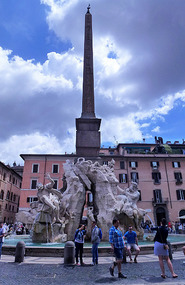
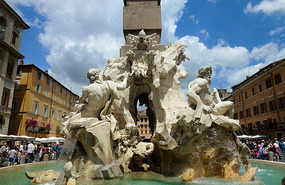
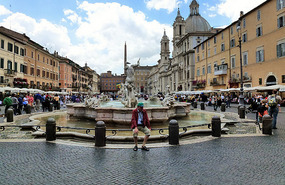
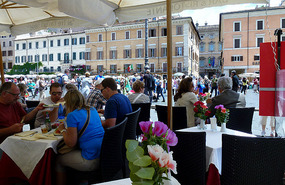
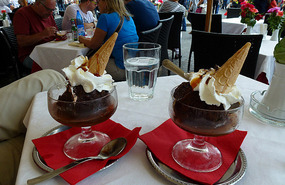
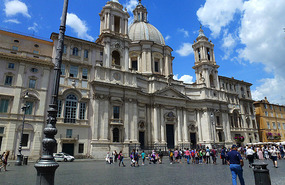
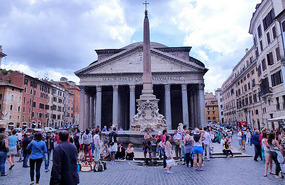
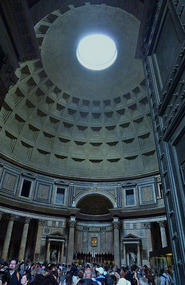
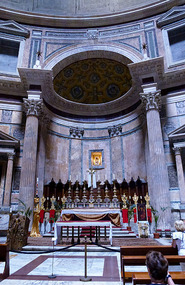
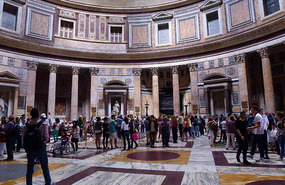
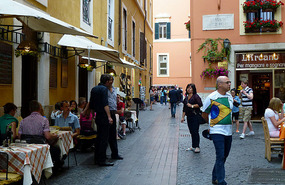
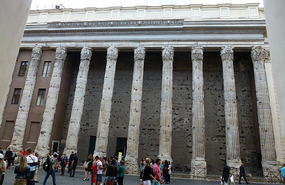
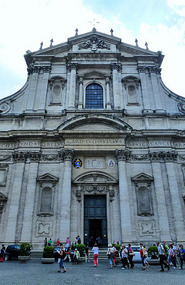
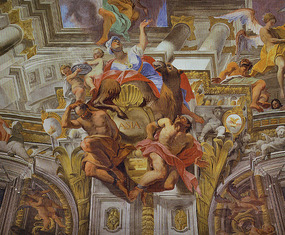
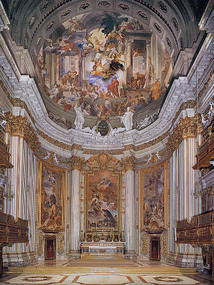
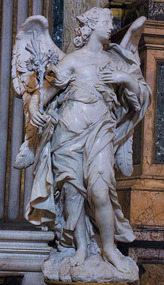
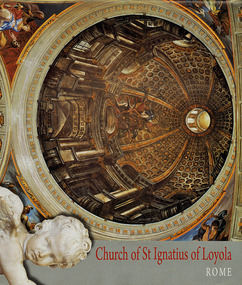
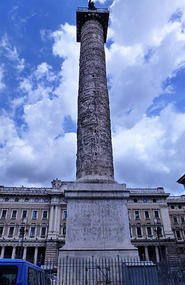
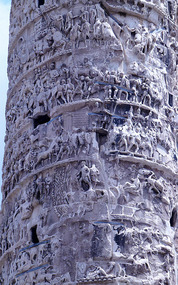
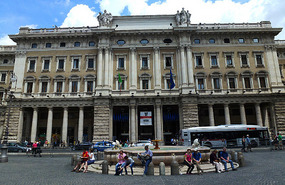
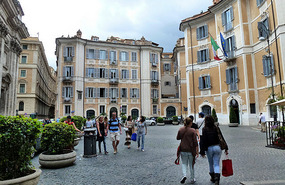
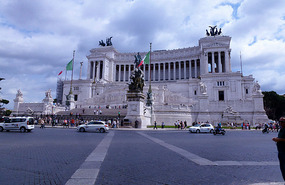
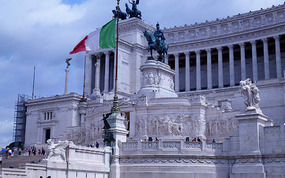
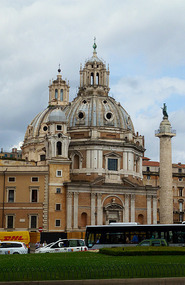
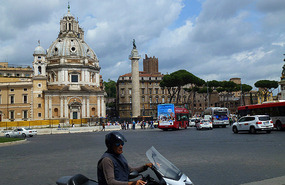





2025-05-22